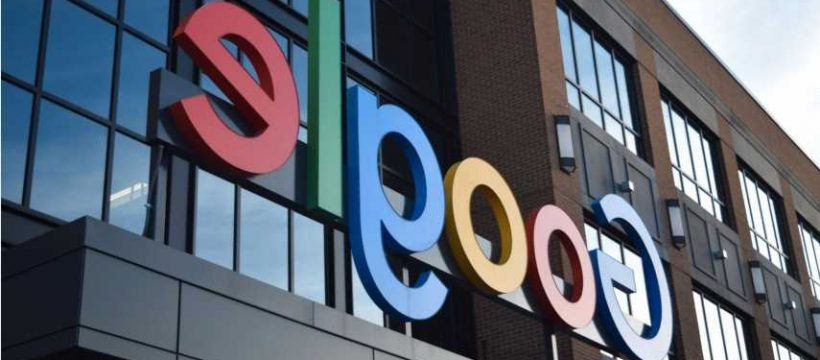It’s September, somewhere in the early 1990s in sunny Menlo Park, California. Larry Page sits across from Sergey Brin during a break from their Ph.D. program at Stanford University. Together, the two are working on a research project, one that analyzes the relationships between websites. Struggling to find the information they’re looking for, they pose the question: “What if we could filter through endless results by prioritizing the most-viewed content?” The idea was fleshed out during the creation of a program called PageRank, and later known as BackRub. But after fixing the bugs, along with the name, they rented out a garage in Palo Alto and launched what would be the largest index of websites in the world.
Through success and an unending stream of users, Google was able to expand from its garage origins and purchase several billion-dollar buildings throughout the world. The company has morphed from a Ph.D. project into a $300 billion enterprise that not only purchases competing tech companies and invests in some of the most innovative start-ups but that also purchases high-end corporate real estate. The company’s latest acquisition is a $2.1 billion office building located in Manhattan’s West Side known as the ‘St. John’s Terminal’ building. The sprawling campus is expected to house 12,000 employees and overlooks the Hudson River waterfront. Through the bold executive decision, Google has separated itself from other search engines as a company with anticipated longevity.
Real Estate Around the World
Google initially launched from a Palo Alto garage before renting two other sites in the area, finally finding its home in Mountain View, California, at 1600 Amphitheater Parkway back in 2003. The new headquarters would be nicknamed the Googleplex, and nearly 20 years later, it still remains the main headquarters for the company. The risky real estate decision would serve as a starting point for a variety of other property purchases from the company.
One of the first locations outside of Silicon Valley that Google chose to establish residency in was Boulder, Colorado. The company first moved to the Centennial State back in 2006, employing a modest 1,500 people. But since its early days, Google has expanded, moving into Google’s Pearl Place campus, a three-building, 330,000-square-foot development located on 30th Street. But the company didn’t stop there. In September of 2021, the company announced they had also purchased the 125,000-square-foot office building across the street. The six-acre Rêve Boulder is expected to start housing a Google team as early as January of 2022.
RELATED: Breaking Down The $9 Billion Battle Between Google and Oracle
New York, I Love You, But You’re Bringing Me Down
When Google announced its decision to purchase the $2.1 billion, 1.3 million-square-foot building in Hudson Square, the deal quickly became known as the largest American office purchase since 2018. The former largest American office purchase was, again, from Google. And this purchase, too, was in New York. Google purchased its $2.5 billion Chelsea Market building back in 2018. Prior to the acquisition, Google had already made its presence known throughout New York, having bought the historic 111 Eight Ave. building in 2010 for a reported $1.77 billion. But Google didn’t swallow the big apple in one massive bite. When the company first entered the state, it was home to just a single employee working out of a Starbucks in 2000. But the recent acquisition is nearly unimaginable for that first employee, especially within the context of the 3.1 million square feet of office space within their newly-purchased empire.
Construction on the $2.1 billion-dollar office building is expected to finish in mid-2023. This includes the redevelopment as a green office building, incorporating open spaces and a rooftop terrace. The design is also expected to feature references to the building’s past, including railway tracks that still exist within the complex. Enticing its employees is a big push for the company to bring its employees back to work starting in January of 2022.
A Future that Algorithms Couldn’t Predict
Beyond saving the real estate market, and, possibly, the economy as a whole, Google has additional plans for their future. The company recently announced its expansion into ambient computing, prioritizing machine/human interaction by making their software and hardware available everywhere. The main focus is the integration of products and software like apps on mobile devices that work for Android phones. With over 2 million mobile apps available, the company has a plethora of work cut out for them. Robotics has also become an integral side-adventure for the company. Initially utilizing the software for driverless cars, the company has decided to create a robot army via their acquisition of Boston Dynamics. This includes patents to “control robot armies” and “build robots with personalities.” But despite how dystopian the $300 billion company might seem, there will at least always be a big, beautiful office building for their employees to do their work.
READ NEXT: Google’s DeepMind Artificial Intelligence Is Starting To Surpass Humans
Source: Trendrr, NYTimes, CNBC, CNN, Forbes, WallStreetJournal, NYPost, BizJournals, NeilPatel, Quartz, PatFT, BusinessInsider, DenverPost
Source: Read Full Article
